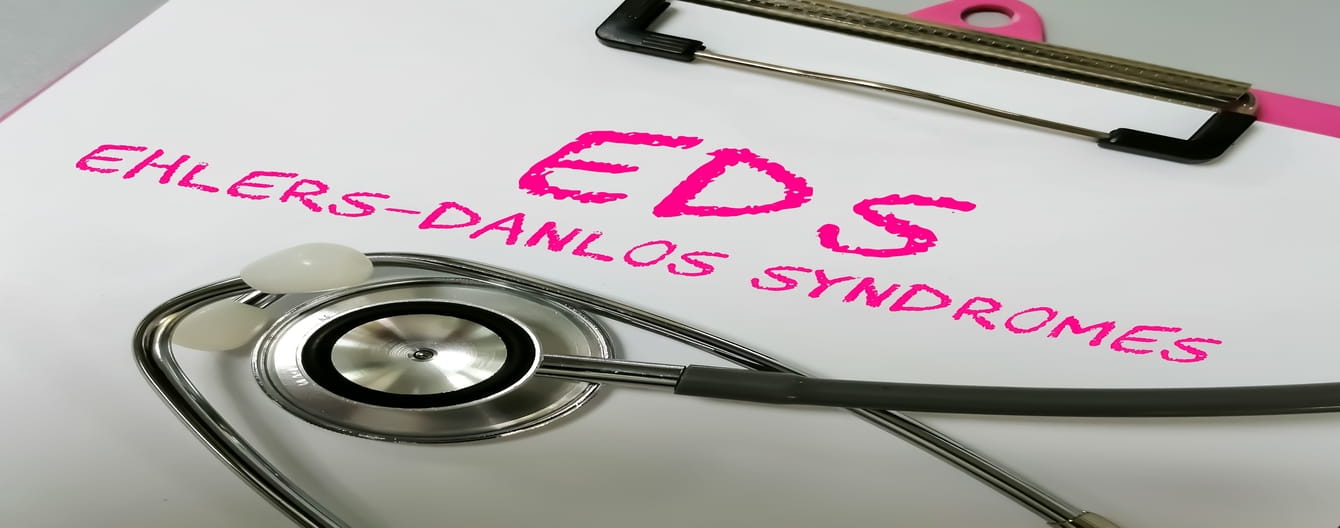A 26-year Journey to Reach a Complex Rare Disease Diagnosis
Article
Patient Engagement & Recruitment


Imagine: it’s Saturday, and you’re at your 5-year-old’s soccer game on a beautiful spring day. As she runs down the field, you watch her collapse because her knee just dislocated.

This is where the rare disease story starts for Haley Quinn, Director of Commercial Enablement for Citeline. At the time of this first dislocation, Haley and her family lived in Russia. She and her family went from doctor to specialist, X-ray to MRI, and surgery after surgery to try to fix her persistent joint dislocation issues.
While they intended to heal her, the response from doctors (and their attempted solutions) were heartbreaking: Consistently, they told Haley and her family, We can try this, but we are not sure it will work, or We have done everything we can, there is nothing else we can do. And they were correct. Nothing worked. As with most parents, hearing this was not an acceptable answer.
It took another 21 years, multiple surgeries, and thousands of dislocations later ― yes, thousands of dislocations in that same leg ― to finally reach multiple diagnoses and a comprehensive treatment plan to manage and control her symptoms. While Haley was diagnosed with three rare diseases, Ehlers-Danlos syndrome (EDS), Charcot-Marie-Tooth disease (CMT), and Gastroparesis, her story, her work, and her advocacy focuses on EDS.
The journey begins to diagnose EDS
According to the National Institutes of Health (NIH), a disease is rare if it affects fewer than 200,000 people. In the US, there are more than 10,000 known rare diseases affecting 10% of the population.
In the early 2000s, Haley and her family moved back to the US (New York), hoping for more advanced medical care. It was at this time her aunt, a nurse, connected Haley and her family with a children’s orthopedic surgeon. Unfortunately, Haley and her parents banged up against that same wall of more tests, more invasive shoulder and leg surgeries, and doctors telling them there was nothing they could do. Again, this was not an acceptable answer for her and her parents, and her symptoms worsened.
She developed anxiety and feared simple activities, such as walking down a sidewalk with her brother or getting dressed in the morning, because she knew her legs and shoulders would dislocate. And when this happened, while Haley was adept at popping her joints back into place, there were times she could not, resulting in emergency calls and visits.
The increasingly intense GI issues and stomach pain were even more concerning, causing regular nausea, sometimes involuntary vomiting, and weight loss. Ding, ding. The doctors finally thought they figured it out and diagnosed Haley with an eating disorder, which, while she did have one, didn’t consider the other physical symptoms. Imagine the emotional trauma of thinking after all these years that it was an eating disorder causing all of this. So, Haley went into a treatment facility, which provided a solution for her to manage and recover from the eating disorder, yet her joint dislocations, GI issues, and anxiety persisted.
Haley is quick to address that the prevalence of eating disorders and mental health illnesses in the EDS community are quite high. Because this condition is accompanied by gastrointestinal diseases and side effects from medications, people living with it often present with anorexia or bulimia. But EDS doesn’t just impact a person physically ― it can lead to anxiety and depression.
Haley is very open about her struggle with mental health throughout her journey, from living in fear of dislocations to the mental strength it takes each day, not knowing how she will feel physically. A blog, The part of Chronic Illness We Don’t Talk Openly About (But Should) published by The Mighty, an advocacy group for the rare disease community, addresses this very topic, that mental illnesses are another chronic condition people must manage and live with.
The journey continues: What I have, has a name!
It is remarkable that, despite numerous health challenges, Haley managed her mental health, graduated from college, and landed her first professional job. Throughout her healthcare journey, Haley decided to dedicate her career to improving healthcare for others. So, in her early 20s, Haley moved to Los Angeles to take a role with a patient engagement company while continuing to search for answers, a diagnosis, a treatment, anything!
At her job, she discovered EDS and learned that what she had been living with for 25 years had a name. She brought EDS to the attention of her surgeon, who had previously performed her near-total leg replacement; miraculously, he knew a colleague who specialized in it.
At her first appointment with a physician who specialized in connective-tissue disorders, Haley reflected on what the doctor said: I don’t even need to put you through a test to know that you have EDS. I can tell from your bone structure and how you carry yourself and guard certain parts of your body. Subsequently, she underwent all the tests to confirm the complex diagnoses of EDS and subsequent comorbid diagnoses.
FINALLY! Yes, there was elation to have answers, but the multiple diagnoses were the beginning of yet another journey for Haley — there are no cures for any of the conditions she was living with. As Haley says, “It was great to finally have answers, yes, but life-changing, no, because there is no cure, and I now had to figure out how to manage each condition to improve my quality of life.”
And improve her quality of life, she did. More on that in a minute.
What is Ehlers-Danlos Syndrome (EDS)?
EDS is an inherited genetic disease that impacts the collagen in your joints. A person with EDS has very loose connective tissue, making for hypermobile joints, thus the risk of chronic dislocations. In addition, it impacts the muscles, so patients with this disease often experience digestive issues and cardiovascular problems. According to Ehlers-Danlos News, the prevalence is thought to affect 1 in 5,000 to 1 in 20,000; the variance is due to many disease types. There are 13.
Through genetic testing, Haley discovered that she inherited this from her mother’s side. In addition, as she met with her EDS specialists and genetic counselors, she joined advocacy and support groups and learned that all the surgeries she went through were often ineffective treatments because, for people with EDS, their bodies and connective tissue in the joints will continuously adapt.
Access doesn’t mean affordable
There are 30 million rare disease patients in this country. Haley’s story is one of them, and while this piece centered around her journey to a complex diagnosis over 26 years of failed tests, surgeries, and treatments, she was one of the patients with insurance to cover healthcare expenses.
But even with good insurance (and she has deep gratitude for her pharmaceutical sponsors who provided financial assistance during her teens and early 20s), she had to trade off putting money in her savings account and going to a semester of college to pay the thousands of dollars in medical bills she received for her portions of the deductible. Beyond the large bills, she will require ongoing physical therapy. To put this in perspective, when she was seeing a physical therapist that was covered by insurance, she spent $45 per visit multiple times a week. Now that she sees a specialized physical therapist, it’s even more expensive.
Affordable healthcare is a known and chronic problem in the United States. According to a study done by the NIH, the average out-of-pocket per-patient-per-year (PPPY) ranges from $8,800 to $140,000. Many pharmaceutical technology companies are playing an increasingly important role in providing insights and predictive analytics to life science companies to bridge the gap when it comes to justifying the standard of care and payer coverage, the goal being to align the standard of care with the patient journey. Patients need access to affordable care during the lengthy diagnosis process through participating in clinical trials, access to new therapies and treatments, and ongoing care management to improve their outcomes and overall quality of life.
Game-changing specialist leads to walking 2,800 miles
Most of us don’t give a second thought to walking our dogs. In Haley’s case, she did. And, now having conclusive diagnoses, she set a goal for herself.
Haley wanted to walk her dog the length of the United States. That’s over 2,800 miles. Her treatment journey to achieving this and other goals, such as learning to dance and putting a shirt on without worrying about lifting her arms above her shoulders, hinged on overcoming one more hurdle: locating a specialized physical therapist.
Fortunately, her genetic counselor knew of one who was both an EDS patient and specialized in this type of physical therapy. This game-changing moment in Haley’s life allowed her to walk her dog 2,800 miles, achieve her other goals, and improve her quality of life. She also actively works on her mental health and the post-traumatic stress associated with everyday tasks that used to cause dislocations and trips to the hospital.
We’re better when we work together
Haley has dedicated her career to building communities and support systems for people like herself. She currently works for Citeline, a Norstella company, educating pharmaceutical companies through the patient’s lens on disease states, clinical trial barriers, and treatment awareness to improve clinical trial design through market intelligence and data-driven insights and technology.
Haley and the Citeline team have built a collective network of 100-plus organizations that can activate simultaneously to drive engagement and raise awareness for pharmaceutical companies running clinical trials. One of the significant challenges is trial recruitment for a host of reasons:
No one is asking patients the little things or how they change their lives to manage their day-to-day symptoms. Citeline’s patient engagement and recruitment collective brings organizations together to deliver tremendous improvements to the drug lifecycle and patient journey — from education to enrollment and access.
The work of Citeline in bringing RWD, predictive analytics, and technology together with pharmaceutical companies and advocacy groups has resulted in the improved design and creation of more holistic trials. These trials go beyond gender, race, and ethnicity. They factor in where people grew up, where they live now, how many times they have seen a doctor in their lifetime, etc. Citeline and Haley are proving that these kinds of partnerships move our healthcare system forward.
It’s time to rethink your approach to clinical trial design. Learn more about Citeline’s suite of business intelligence offerings.


